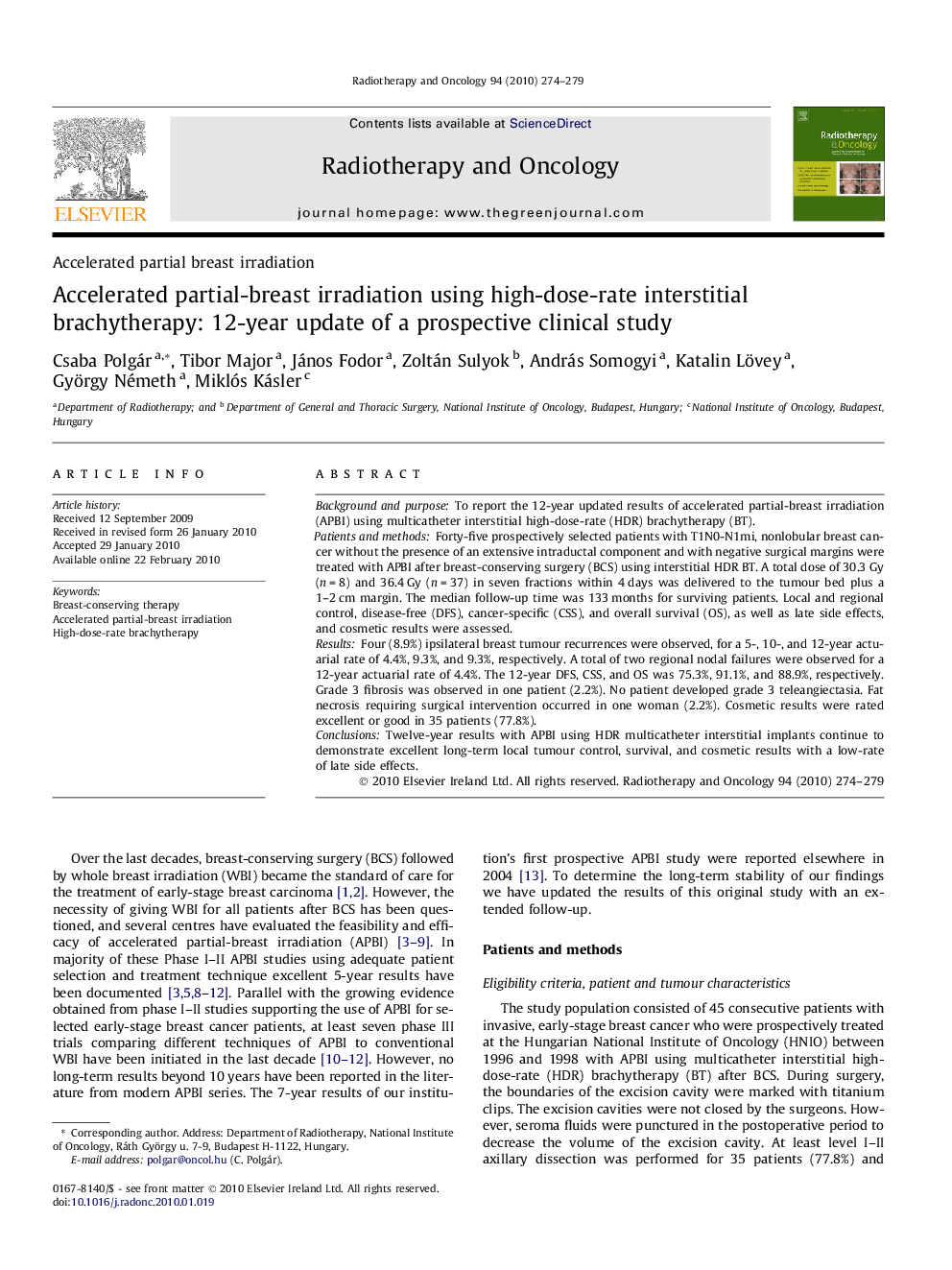| Article ID | Journal | Published Year | Pages | File Type |
|---|---|---|---|---|
| 2159487 | Radiotherapy and Oncology | 2010 | 6 Pages |
Background and purposeTo report the 12-year updated results of accelerated partial-breast irradiation (APBI) using multicatheter interstitial high-dose-rate (HDR) brachytherapy (BT).Patients and methodsForty-five prospectively selected patients with T1N0-N1mi, nonlobular breast cancer without the presence of an extensive intraductal component and with negative surgical margins were treated with APBI after breast-conserving surgery (BCS) using interstitial HDR BT. A total dose of 30.3 Gy (n = 8) and 36.4 Gy (n = 37) in seven fractions within 4 days was delivered to the tumour bed plus a 1–2 cm margin. The median follow-up time was 133 months for surviving patients. Local and regional control, disease-free (DFS), cancer-specific (CSS), and overall survival (OS), as well as late side effects, and cosmetic results were assessed.ResultsFour (8.9%) ipsilateral breast tumour recurrences were observed, for a 5-, 10-, and 12-year actuarial rate of 4.4%, 9.3%, and 9.3%, respectively. A total of two regional nodal failures were observed for a 12-year actuarial rate of 4.4%. The 12-year DFS, CSS, and OS was 75.3%, 91.1%, and 88.9%, respectively. Grade 3 fibrosis was observed in one patient (2.2%). No patient developed grade 3 teleangiectasia. Fat necrosis requiring surgical intervention occurred in one woman (2.2%). Cosmetic results were rated excellent or good in 35 patients (77.8%).ConclusionsTwelve-year results with APBI using HDR multicatheter interstitial implants continue to demonstrate excellent long-term local tumour control, survival, and cosmetic results with a low-rate of late side effects.
